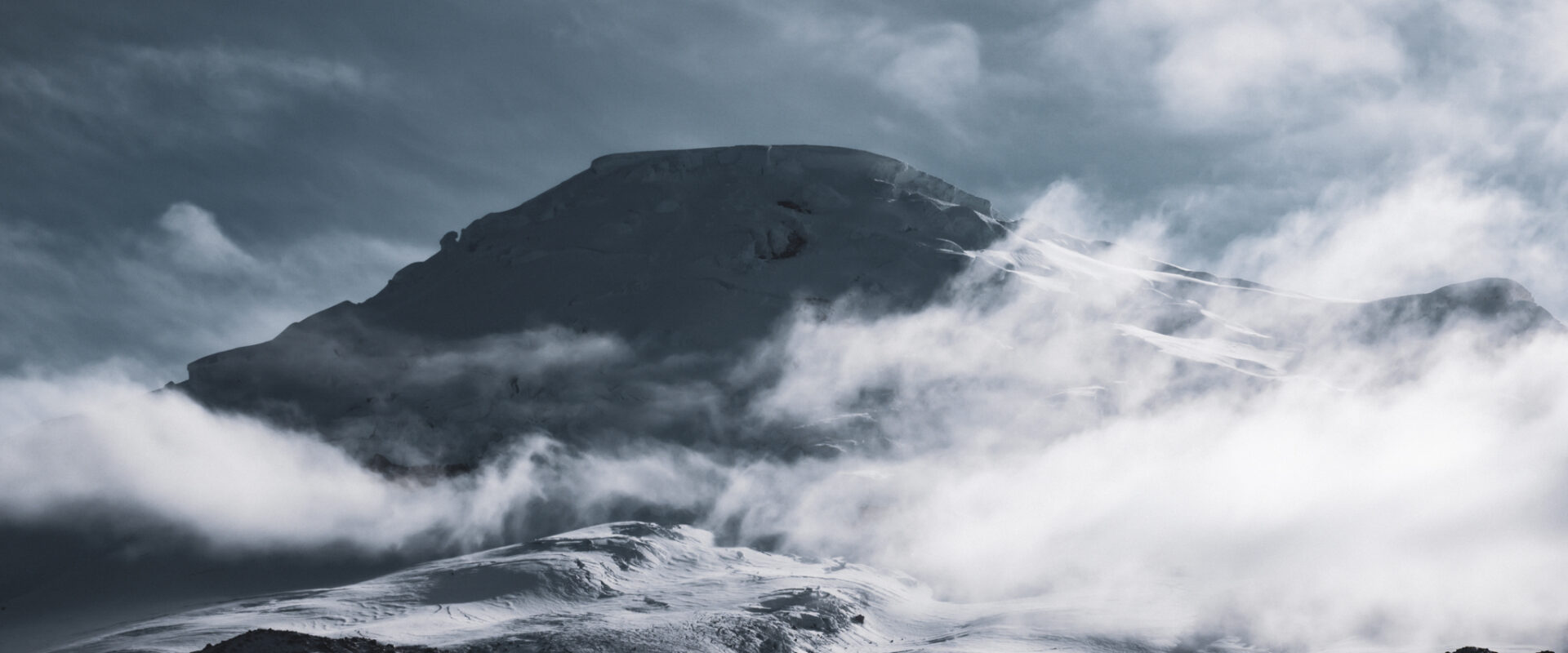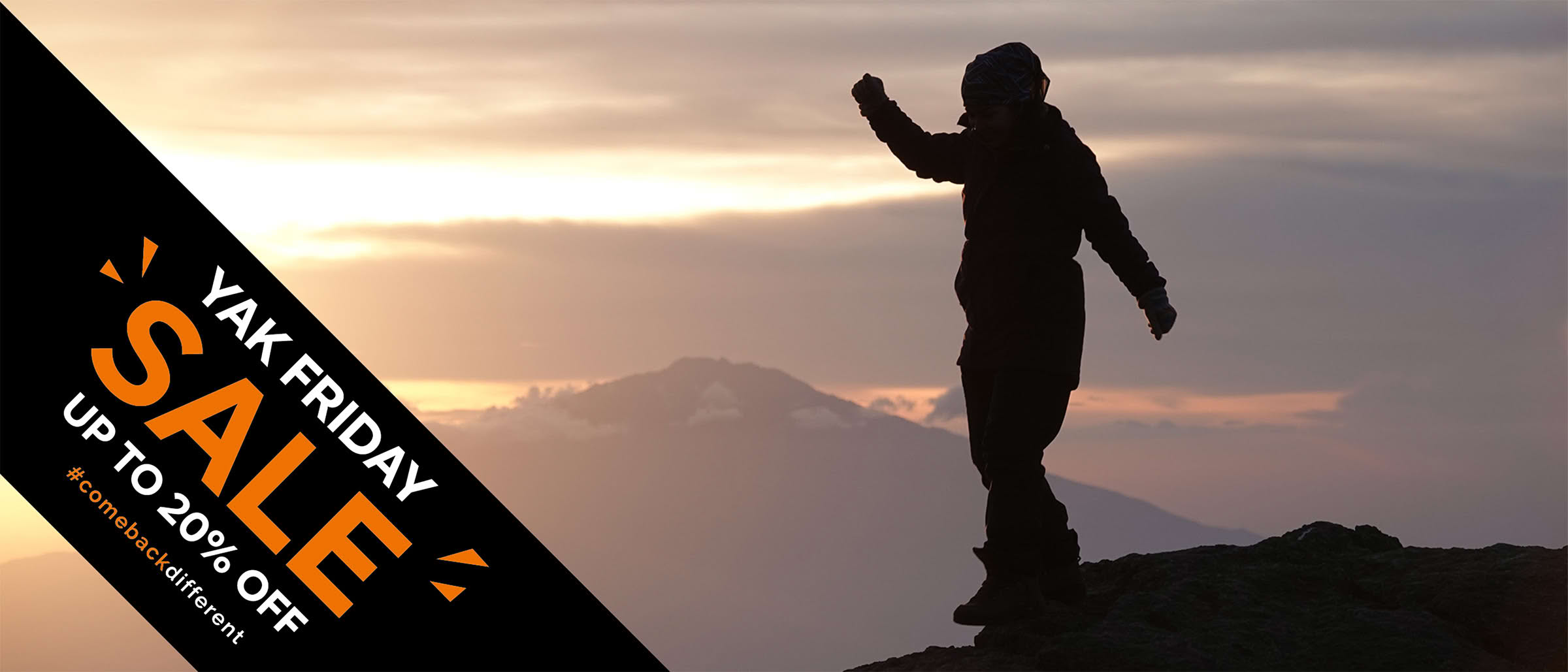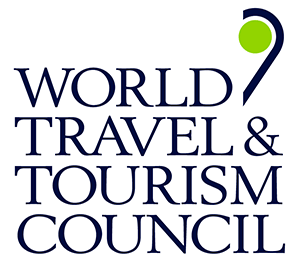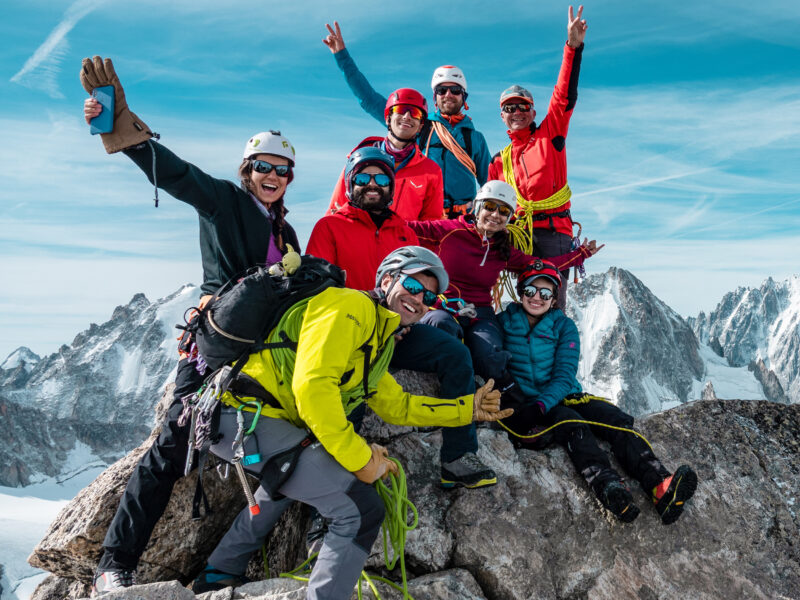BY Rami Rasamny | May 24 2025
The Complete Guide to Climbing Chimborazo & Cotopaxi

Chimborazo Guide
Climbing Cotopaxi and Chimborazo is an unforgettable entry into the high-altitude volcanic world of the Andes. These two Ecuadorian giants are among the most iconic peaks in South America and for good reason.
Cotopaxi, at 5897 meters, is one of the most active volcanoes on Earth, with its near-perfect snowcapped cone dominating the skyline. Chimborazo, Ecuador’s highest peak at 6263 meters, holds a unique claim to fame. Due to the Earth’s equatorial bulge, the summit of Chimborazo is the furthest point from the center of the Earth, even farther than Everest.
At Life Happens Outdoors, our Chimborazo and Cotopaxi expedition is designed to be more than just a climb. It’s a journey of altitude progression, teamwork, and deep personal discovery.
Why Climb Chimborazo and Cotopaxi?
To climb Cotopaxi and Chimborazo is to step into a world of ancient glaciers, dramatic volcanic slopes, and raw, rugged beauty. These climbs offer an ideal introduction to high-altitude mountaineering above 6000 meters while keeping logistics manageable and the adventure high.
Our itinerary uses a progressive acclimatisation model, starting with Ilinizas Norte, then Cotopaxi, and finally Chimborazo. This sequence not only gives your body time to adapt, it also allows you to build skills, confidence, and resilience before attempting the more demanding Chimborazo climb.
This is not just a summit. It’s an experience that can redefine what you believe is possible.
Is This Climb Right for Me?
The Chimborazo climb is not a technical expedition, but it is physically demanding. Reaching altitudes above 6000 meters comes with its own set of challenges, and you need to arrive prepared.
Ideal candidates for this expedition typically have a strong foundation of trekking or hiking experience, good cardiovascular endurance, and a flexible mindset. No prior high-altitude or glacier experience is required, but it helps. Our expert guides and expedition coordinators are there to support you every step of the way from gear checks to glacier crossings.
Best Time to Climb Chimborazo and Cotopaxi
One of Chimborazo’s unique advantages is its year-round accessibility. Unlike many high-altitude peaks that become inaccessible during shoulder seasons, Chimborazo can be climbed in any month, making it one of the few 6000-meter objectives available throughout the year.
That said, weather on Chimborazo is highly variable. Its equatorial location and extreme altitude mean climbers can face sudden shifts in temperature, wind, and visibility at any time. Proper gear and flexible planning are essential.
Cotopaxi, while also accessible most of the year, sees its best climbing windows between June to August and December to February, when conditions are generally more stable.
At Life Happens Outdoors, our expeditions are designed around built-in flexibility. By incorporating Ilinizas Norte and Cotopaxi as acclimatisation climbs, we allow your body to adjust while creating a generous weather window for the Chimborazo summit push. This strategy significantly improves the odds of success on both peaks.
In short, the best time to climb Chimborazo and Cotopaxi is when you are ready, with a strong plan, the right team, and room to adapt to the mountain.
How Hard Is It to Climb Mount Chimborazo?
The challenge of climbing Mount Chimborazo lies not in technical climbing but in altitude, endurance, and cold. The standard Chimborazo climb via the Normal Route is a glacier ascent involving crampons, ice axes, and rope travel. While there are no vertical pitches, you will be moving for eight to ten hours in freezing conditions at high altitude.
Key challenges include glacier travel in darkness during the summit push, thin air above 5000 meters, and exposure to wind and low temperatures. Our itinerary and acclimatisation plan are built specifically to prepare your body and mind to take on these conditions with confidence.
How Long Does It Take to Climb Chimborazo?
The Chimborazo climb itself typically takes two days from the Carrel Hut, with the summit push beginning around midnight to reach the top by sunrise.
The full expedition runs over ten days and includes arrival and cultural exploration in Quito, acclimatisation hikes, summits of Ilinizas Norte and Cotopaxi, rest days, and flexible planning for optimal conditions. This approach ensures a safer and more successful experience, with time to adjust, recover, and climb in rhythm with the mountain.
Chimborazo Climb Cost
The Chimborazo climb cost with Life Happens Outdoors is £4890 GBP, offering exceptional value for a fully supported, high-altitude expedition led by elite professionals.
This includes:
- Dedicated LHO Team Leader and Expedition Photographer
- Carefully selected IFMGA-certified Chimborazo guides
- Two-to-one guide ratio for the Chimborazo summit push
- Four nights in a stylish 4-star hotel in Quito
- Three nights in a trendy 4-star hacienda hotel in Riobamba
- One night in a mountain hut on Cotopaxi
- One night in a high-altitude technical tent with sleeping mats on Chimborazo
- All meals and safe drinking water throughout the trip
- All internal transportation, including airport transfers, itinerary travel, and cable car passes
- All permits and certificates
- Contingency plans for alternative summits if weather or conditions affect the primary objective
- Group mountaineering equipment and personal gear rental, including boots, crampons, harness, ice axe, and helmet
- Fitness and nutrition guides
- Gear shopping assistance
- Bad weather contingency days
- Full support from the LHO Base Camp team
With LHO, you’re not just booking a summit attempt. You’re joining an experience built for safety, storytelling, and personal transformation, where logistics are handled, your gear is ready, and your only focus is to climb.
What to Pack
You’ll be moving across glaciers, snow, and exposed slopes in tough conditions. Packing smart is essential.
Your core gear should include mountaineering boots compatible with crampons, thermal layers, waterproof outerwear, glacier glasses, insulated gloves, a headlamp, and a hydration system. You’ll receive a detailed kit list before departure, and our team will review your equipment in person to ensure you’re fully prepared.
Acclimatisation and Altitude
Altitude is the single biggest factor in determining success. At over 6000 meters, acclimatisation is essential.
Our itinerary is built on a gradual exposure model. You begin in Quito at 2800 meters, summit Ilinizas Norte at 5126 meters, rest and regroup, then climb Cotopaxi at 5897 meters before the final push on Chimborazo at 6263 meters.
This gradual progression gives your body time to adjust and significantly reduces the risk of altitude sickness, while allowing you to enjoy each climb on its own terms.
Why Climb With Life Happens Outdoors?
At Life Happens Outdoors, we believe in climbing with purpose. Our expeditions are built to challenge, inspire, and transform.
When you climb Cotopaxi and Chimborazo with us, you get certified, experienced Chimborazo guides, a dedicated expedition coordinator handling logistics, safety, and support, a powerful group culture that turns strangers into teammates, and a focus on growth, resilience, and personal connection to the outdoors.
This isn’t just about reaching the top. It’s about coming back different.
Final Thoughts
Whether you’re dreaming of your first 6000-meter summit or looking to push your limits in a new environment, climbing Cotopaxi and Chimborazo offers one of the most rewarding mountaineering experiences on the planet.
Let this journey be your gateway to high-altitude mountaineering and a deeper connection to yourself.
Join the next Chimborazo and Cotopaxi expedition with Life Happens Outdoors and experience the Andes like never before.
About The Author
Rami Rasamny is the founder of Life Happens Outdoors, a premium adventure travel community dedicated to transforming lives through curated outdoor experiences. A mountaineer and entrepreneur, Rami has led teams on some of the world’s most challenging peaks, from the Alps to the Himalayas. His mission is to make adventure accessible, transformative, and safe for all who seek to push their limits and Come Back Different.
About Life Happens Outdoors
At Life Happens Outdoors, we believe in the power of nature to transform lives. As proud members of the Adventure Travel Trade Association (ATTA) and the World Travel & Tourism Council (WTTC), our team of certified guides and outdoor professionals is committed to the highest standards of safety, sustainability, and excellence.
Discover more about our story and mission on our Meet LHO page, or explore our curated adventures such as the Tour du Mont Blanc Trek, the Climb of Kilimanjaro, and Chasing the Northern Lights.















